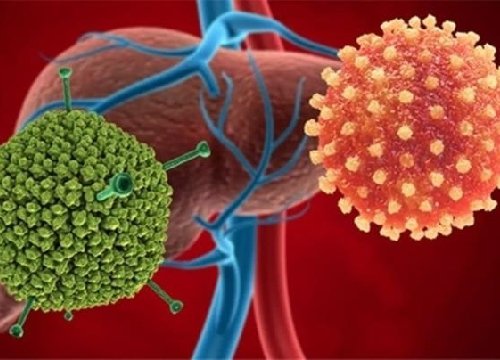The case of a nanny with a salary of 60 million dong: The shocking testimony about misconduct, revealing the relationship with the landlord

3 | 0 Discuss | Share
Most children with Angelman tend to laugh a lot, happy all day, some mothers think their children laugh often, so they do not pay attention to whether they have any syndrome or not because when born, children with this syndrome do not show any signs of abnormality.
Angelman syndrome is a condition that appears in babies right from the womb of their mother. It is a rare disease and does not usually pose an acute danger, however, children with this syndrome often require special observation and care over a long period of time.
Angel syndrome is a genetic disorder associated with abnormalities in the structure of chromosome 15, affecting the nervous system and causing serious physical and intellectual defects of the child.
Children with angel syndrome often smile and laugh involuntarily, cheerful personality is easily excitable. Babies usually have developmental delays between 6 and 12 months of age. Seizures usually begin between 2 and 3 years of age.
Although children with angel syndrome can live normally, but currently this disease does not have a complete cure, the treatment mainly focuses on controlling medical problems.
Symptoms of Angelman's disease
Children with Angelman's disease at birth are normal, small heads and flatness can be observed at the back of the head, but the symptoms are not pronounced, but when the baby is about 6-12 months old, the symptoms are easier to recognize by:
Difficulty feeding, sucking and swallowing Delayed motor development compared to age, e.g. 1 year old toddler, 3 years old toddler, delayed speech or difficult speech, unable to speak.
As the child gets older, the diagnosis becomes easier due to the fact that the symptoms are expressed more and more pronounced, the disease is usually diagnosed when the child is 18 months-7 years old, with symptoms such as:
90% of children will develop epilepsy by the age of 2-3 years, and can last a lifetime Abnormal gait, difficulty keeping balance, rough walking like a robot, or clapping or raising 2 hands when walking. Always have a happy face and smile Intellectual and speech defects The child is easily agitated and hyperactive, unable to concentrate for a long time, often switching from one activity to another. Very little sleep, difficulty falling asleep
Over time, some symptoms seem to subside, and by adulthood, people with Angelman disease will:
Sleep problems and hyperactivity, excitability will decrease with age without medication Epilepsy symptoms remain Intellectual defects do not change, patients have intellectual disabilities, speech difficulties, not fluency. The spine is crooked Tendency to obesity, round face
Angelman syndrome is an inherited condition caused by a loss or error on part of the UBE3A gene on chromosome 15.
Risk subjects Angel syndrome
Angel syndrome is an extremely rare genetic pathology with a probability of about 1/12,000 - 20,000. Most children with angel syndrome are diagnosed between the ages of 3 and 7, because the signs of their behavior and movement become clear and recognizable.
Initially, very few cases of angel syndrome were detected. But in the past 3 decades or so, advances in genetics have helped doctors diagnose and record more and more pediatric patients with this syndrome.
Although the average life expectancy of people with angel syndrome is comparable to that of normal people, patients need care throughout their lives.
Is Angelman syndrome dangerous?
Children with Angelman often have complex genetic structures that lead to their nervous systems being affected.
According to doctors, Angelman syndrome does not affect the life of the fetus and the life expectancy of babies with Angelman will be comparable to other babies. The abnormal signs of Angelman syndrome are not as severe as others, and some treatments can be applied to improve the child's condition. Your child's positive change will depend greatly on the efforts and perseverance of parents, so families with children with Angelman syndrome should not be discouraged.
Angelman cannot be easily recognized like other syndromes without a diagnosis, many children do not have too many abnormal manifestations so parents do not know about it until they grow up to know that their child has Angelman syndrome.
By the time children are over 2 years old, the signs are easier to recognize, but the signs are usually not too dangerous, if not noticed, they cannot be recognized.
At this time, intervention, rehabilitation and physiotherapy are very difficult, and improvement is not much. Therefore, Angelman diagnosis or prenatal screening is always a priority issue that many mothers pay attention to when it comes to Angelman syndrome.
Causes of Angelman syndrome
Angelman syndrome was diagnosed as a coincidence during conception, and the father's and mother's chromosomes combined had abnormal problems that caused the fetus to have two more copies of chromosome 15. Hereditary genes are one of the factors involved in this syndrome.
Determining the exact cause of Angelman syndrome, experts believe that the main cause of this syndrome is that the UBE3A gene is located in the defective chromosome 15, causing the fetal chromosome set to be genetically disrupted.
GenZ's "Language Disorders" trend: Is it really fun to entertain other people's flaws?  Bảo Tiên14:48:07 30/08/2023Young people are psychologically manipulated by the language disorder trend on TikTok. The trend caused social media fever recently. However, this trend that is meant to poke fun at does inadvertently create additional pressure on those who are unfortunate enough to suffer.
Bảo Tiên14:48:07 30/08/2023Young people are psychologically manipulated by the language disorder trend on TikTok. The trend caused social media fever recently. However, this trend that is meant to poke fun at does inadvertently create additional pressure on those who are unfortunate enough to suffer.

3 | 0 Discuss | Share

5 | 0 Discuss | Share

3 | 0 Discuss | Share

4 | 0 Discuss | Share

2 | 0 Discuss | Share

3 | 0 Discuss | Share

1 | 0 Discuss | Share

3 | 0 Discuss | Share

5 | 0 Discuss | Share

3 | 0 Discuss | Share

4 | 0 Discuss | Share

3 | 0 Discuss | Share





1 | 1 Discuss | Report